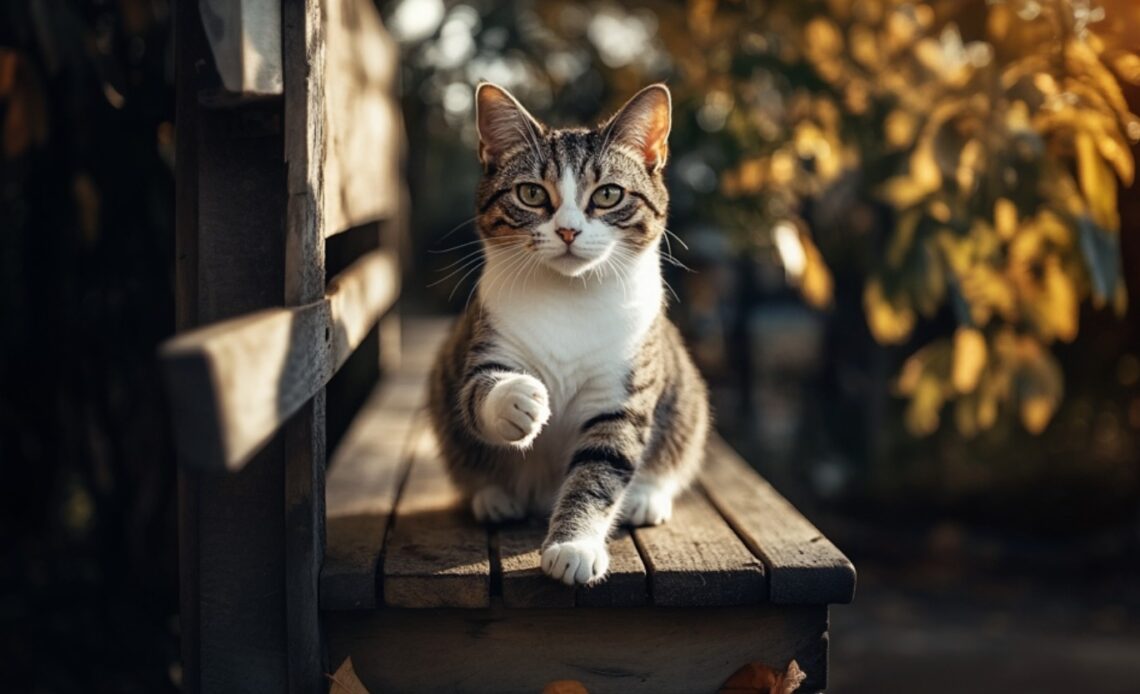
The American Polydactyl cat, often called “Hemingway cat” in homage to author Ernest Hemingway’s affection for the breed, holds a unique place in the world of felines. Recognized by its distinctive, multi-toed paws, this cat has captivated pet enthusiasts for generations with its charm, adaptability, and physical quirk. From genetic curiosities to a personality as endearing as its unusual paws, the American Polydactyl cat is an enchanting blend of genetic wonder and affable companion.
Origins of the American Polydactyl Cat
Though the American Polydactyl’s history is somewhat mysterious, its genetic roots are believed to trace back to seafaring days in New England and Nova Scotia, where polydactyl cats were often regarded as good luck by sailors. These cats were valued on ships not only for their mythic qualities but also for their enhanced balance and agility, which aided in controlling the ship’s rodent population. The gene for polydactylism likely spread as these cats were traded or gifted by sailors. The distinct appearance and charm of these cats soon made them a popular choice among pet owners on land.
Distinctive Physical Characteristics
The hallmark feature of the American Polydactyl cat is, without doubt, its extra toes. Polydactylism is a genetic mutation that results in additional digits on one or more paws, giving the cat an almost “mitten-like” appearance. Most commonly, this occurs on the front paws, although it can affect the hind paws as well. In some cases, American Polydactyls have been known to possess as many as seven toes on a single paw, lending them a unique appearance that is not only charming but also functional. The added digits can contribute to increased grip and balance, allowing these cats to perform feats of agility with surprising ease.
In addition to their famous toes, American Polydactyls are sturdy cats, with medium to large builds and a muscular physique. Their coats come in a variety of colors and patterns, showcasing everything from solid colors to intricate tabby markings. These cats have expressive eyes that come in shades of green, yellow, and blue, adding to their striking look.
The Genetics Behind Polydactylism
Polydactylism in cats is a dominant genetic trait, meaning that a cat only needs one copy of the gene from either parent to express the trait. This mutation, called “Pd,” can produce an additional one or more digits per paw. Unlike certain genetic conditions that may result in health complications, the Pd gene is typically harmless and does not hinder a cat’s mobility or health. Interestingly, polydactylism is more prevalent in certain areas, such as the northeastern United States and southwestern England, suggesting a historical geographic spread of this unique genetic trait.
Personality and Temperament
American Polydactyl cats are as delightful in personality as they are unique in appearance. Known for their sociable and easygoing nature, they tend to bond strongly with their human families and are often friendly toward strangers. They are notably affectionate and enjoy human interaction, often seeking out laps and following their owners from room to room. These cats are well-suited to families, as they are generally gentle with children and tolerate handling, making them ideal companions for households with a variety of ages.
In addition to their loving demeanor, American Polydactyls are highly intelligent and curious, with a propensity for exploration. They may engage in playful behavior well into their adult years, delighting in puzzles, toys, and even tricks, as their extra toes lend a certain dexterity to their play. Many owners describe these cats as “dog-like” in their loyalty and responsiveness, traits that make them a joy to have as a pet.
Care and Maintenance
Caring for an American Polydactyl cat requires no extraordinary measures beyond standard feline care, but their extra toes do warrant a bit of attention. It is essential to monitor their paws and claws regularly, as the additional digits can lead to complications such as ingrown claws. Regular nail trimming is recommended to prevent any potential issues.
These cats have a moderate level of grooming needs, largely depending on coat length. Regular brushing is beneficial, especially in long-haired varieties, to prevent matting and reduce shedding. The American Polydactyl is generally healthy, with few breed-specific health concerns, making them a relatively low-maintenance pet overall.
Health and Lifespan
American Polydactyl cats are generally robust and healthy, with a life expectancy of 12 to 15 years or more. The polydactyl gene itself does not predispose them to any specific health issues. However, as with all cats, routine veterinary check-ups are essential for maintaining optimal health. Polydactyl cats are susceptible to the same common feline ailments as any other breed, such as dental issues, kidney disease, and heart conditions. Regular dental care, a balanced diet, and ample exercise are all keys to ensuring a long, healthy life for these cats.
Is an American Polydactyl Cat Right for You?
Choosing an American Polydactyl cat as a pet is a decision that brings unique rewards. Their affable, loving nature makes them well-suited for those seeking a loyal and interactive companion. Their fascinating paws are sure to be a conversation starter, and their ease of care makes them an ideal choice for both new and experienced cat owners alike. With proper attention to grooming and regular health check-ups, these cats thrive in a variety of living environments, adapting well to both apartments and houses.
Conclusion
The American Polydactyl cat is much more than its multi-toed paws. With a rich history, distinct appearance, and gentle yet playful nature, this breed offers a delightful blend of novelty and companionship. Whether you’re drawn to their historical seafaring legacy, their endearing looks, or their loyal temperament, the American Polydactyl cat makes a unique and charming addition to any home. For those willing to embrace a cat with a little extra “character,” the American Polydactyl is a truly rewarding choice.

